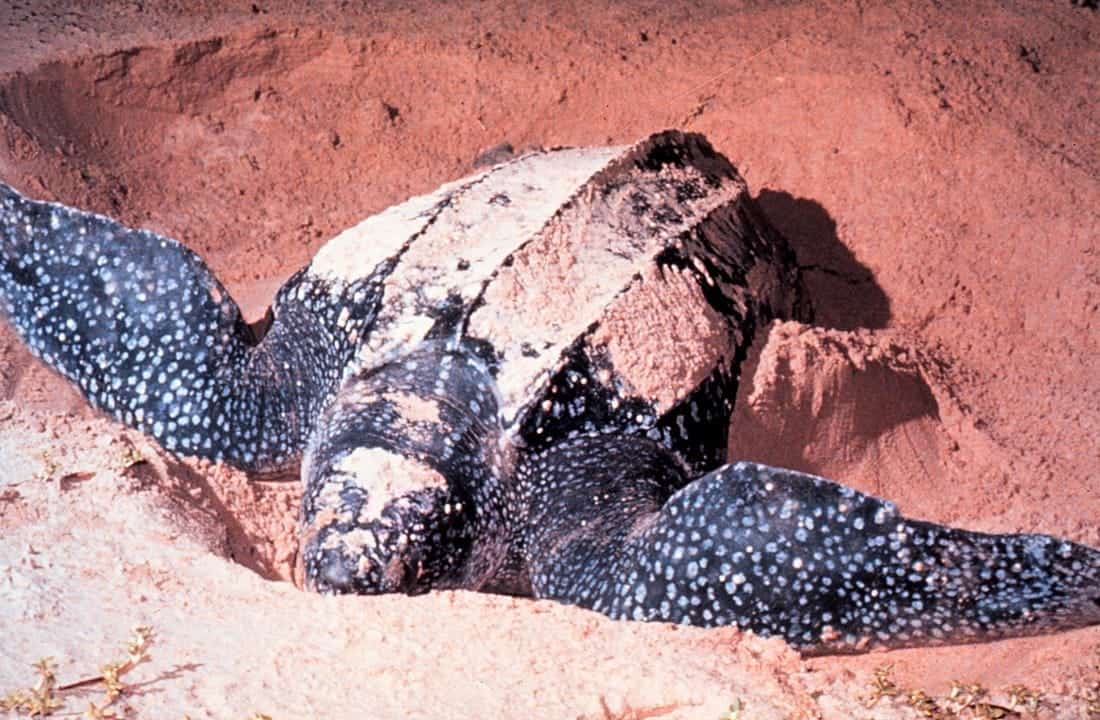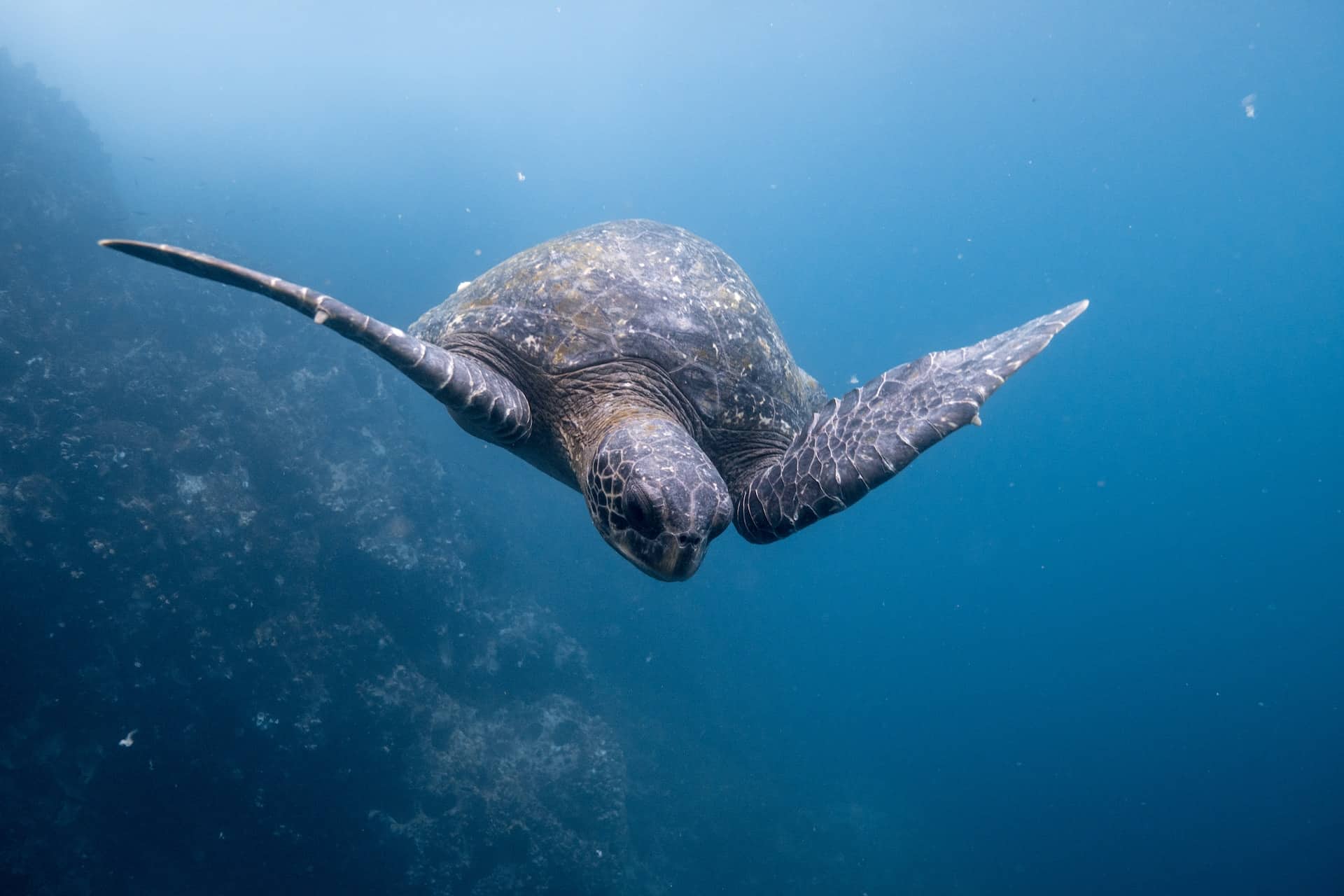A significant discovery was made on June 20, 2023, on Ocracoke Island in the Outer Banks of North Carolina. Wildlife officials found a leatherback sea turtle nest, marking the first time in over a decade that this endangered species has nested on the island.
The Discovery of the Leatherback Nest

During a routine turtle patrol, park biologists discovered a leatherback sea turtle nest with 93 eggs. The nest was located right at the high tide line, prompting immediate action to relocate the eggs to a safer spot on the beach.
Relocating the Eggs for Safety

Due to the nest’s precarious position near the high tide line, all 93 eggs were carefully moved by park biologists to a more secure location. This relocation is crucial to ensure the eggs’ survival, preventing them from being washed away by the tide.
Leatherback Sea Turtles

The leatherback sea turtle is the largest sea turtle species globally, capable of weighing up to 2,000 pounds and measuring up to 6-and-a-half feet in length as adults. These majestic creatures are currently listed as endangered.
Previous Leatherback Nests on Ocracoke Island

The recent nest is the first leatherback sea turtle nest on Ocracoke Island since 2012. Previous nests were also recorded in 2007 and on Hatteras Island in 2022, 2009, and 2004. Each discovery adds to the understanding and conservation of this species.
The Decline of Leatherback Sea Turtles

According to NOAA, the global population of leatherback sea turtles has declined by approximately 40% over the past three generations. This alarming decline underscores the importance of conservation efforts.
Nesting Habits of Leatherback Sea Turtles

Leatherback sea turtles have a nesting season that runs from March to July. Female leatherbacks typically nest every 2 to 4 years, laying eggs that incubate for about two months before the hatchlings emerge.
Challenges Faced by Leatherback Hatchlings

Under natural conditions, only about 10% of leatherback hatchlings will survive predators on the beach. Even fewer make it past their first days in the ocean, with only 6% surviving their first year.
The Importance of Protecting Sea Turtle Nests

Protecting sea turtle nests is crucial for the survival of these endangered creatures. Relocating eggs from high-risk areas and safeguarding nests from human activities are essential conservation strategies.
Sea Turtle Nesting on Cape Hatteras National Seashore

As of the 2023 nesting season, there have been 114 sea turtle nests recorded on the Cape Hatteras National Seashore. These include 104 loggerhead nests, four green turtle nests, two Kemp’s Ridley nests, and the single leatherback nest.
Public Involvement in Sea Turtle Conservation

Residents and visitors to nesting beaches are encouraged to help protect sea turtles by cleaning up after themselves, filling in holes, knocking down sandcastles, and keeping lights off at night to prevent disorienting hatchlings.
The Role of Park Biologists in Sea Turtle Conservation

Park biologists play a vital role in monitoring sea turtle populations, relocating nests, and ensuring the safety of both eggs and hatchlings. Their work is critical to the recovery of endangered sea turtle species.
Leatherback Sea Turtles in the Ecosystem

Leatherback sea turtles contribute to the marine ecosystem by maintaining the health of seagrass beds and coral reefs. Their presence indicates a balanced and healthy marine environment.
The Future of Leatherback Sea Turtles

Conservation efforts, including habitat protection and public education, are essential for the future of leatherback sea turtles. Continued monitoring and protection of nesting sites are crucial for their survival.
How to Help Leatherback Sea Turtles
Individuals can help protect leatherback sea turtles by supporting conservation organizations, reducing plastic use, and participating in beach cleanups. Every action contributes to the preservation of these magnificent creatures.

What Is the Largest Sea Turtle Species?

The leatherback sea turtle is the largest sea turtle species, capable of weighing up to 2,000 pounds and measuring up to 6-and-a-half feet as adults.
When Was the Last Leatherback Nest Found on Ocracoke Island?

The last leatherback nest on Ocracoke Island was found in 2012, making the 2023 discovery the first in over a decade.
Why Were the Leatherback Eggs Relocated?

The eggs were relocated because the nest was positioned right at the high tide line, putting them at risk of being washed away.
How Often Do Leatherback Sea Turtles Nest?
Leatherback sea turtles typically nest every 2 to 4 years during the nesting season, which runs from March to July.

What Percentage of Leatherback Hatchlings Survive?

Only about 10% of leatherback hatchlings survive the initial predators on the beach, and even fewer make it through their first days in the ocean.
How Are Leatherback Sea Turtles Protected?

Leatherback sea turtles are protected through measures like relocating at-risk nests, safeguarding nesting sites, and reducing human impacts on their habitats.
What Is the Global Population Trend of Leatherback Sea Turtles?

The global population of leatherback sea turtles has declined by about 40% over the past three generations, highlighting the need for conservation efforts.
What Should Beachgoers Do to Protect Sea Turtles?

Beachgoers can protect sea turtles by cleaning up after themselves, filling in holes, knocking down sandcastles, and keeping lights off at night to prevent disorienting hatchlings.
How Do Leatherback Sea Turtles Contribute to the Ecosystem?

Leatherback sea turtles help maintain the health of seagrass beds and coral reefs, playing a crucial role in the marine ecosystem.
What Can Individuals Do to Help Leatherback Sea Turtles?

Individuals can support conservation organizations, reduce plastic use, and participate in beach cleanups to help protect leatherback sea turtles and their habitats.
What Are the Main Threats to Leatherback Sea Turtles?

The main threats to leatherback sea turtles include habitat loss, human activities, and environmental changes. Conservation efforts aim to mitigate these threats.
How Is the Leatherback Turtle Different from Other Sea Turtles?

The leatherback turtle is unique for its size, lack of a hard shell, and its ability to tolerate colder waters compared to other sea turtles.
Why Is Nest Relocation Important for Sea Turtles?

Nest relocation helps protect sea turtle eggs from threats such as high tides, predators, and human activities, increasing their chances of survival.
What Are the Characteristics of a Leatherback Turtle?

Leatherback turtles have a leathery shell, large size, and distinctive ridges along their back, making them easily recognizable among sea turtle species.
How Does Climate Change Affect Leatherback Sea Turtles?

Climate change affects leatherback sea turtles by altering their nesting sites, changing sea temperatures, and impacting their food sources, posing additional challenges for their survival.
Next Up:
Bald Eagle gets Electrocuted in West Seattle, Knocking Out Power in Neighborhood
Remarkable One-Eyed Yellowstone Wolf Celebrates 10th Litter of Pups at Age 11
Join our Forum for free today!

- Massive Anaconda and Caiman Come Face to Face In Gripping Standoff - June 26, 2024
- Stranded Lion Gets Attacked by Hippos - June 26, 2024
- One-in-100 000 Rare Ginger Albino Seal Pup May Be Rejected by his Colony - June 26, 2024

